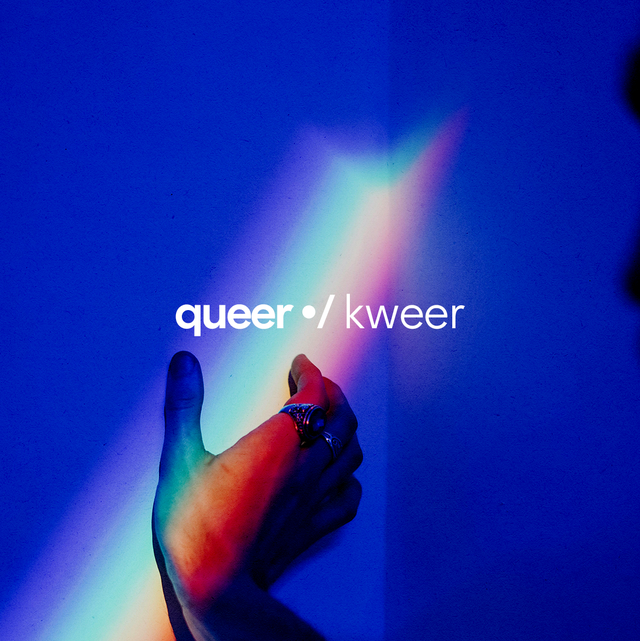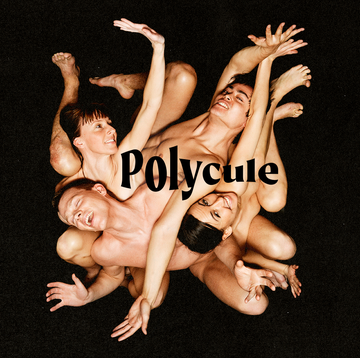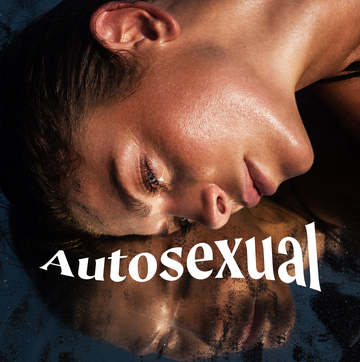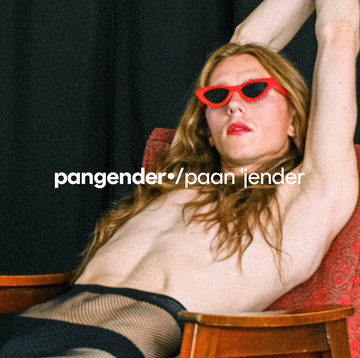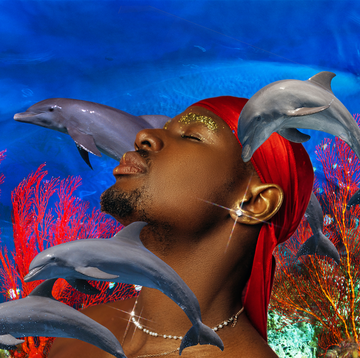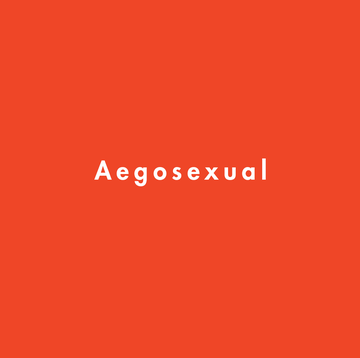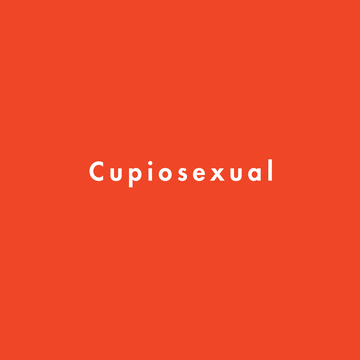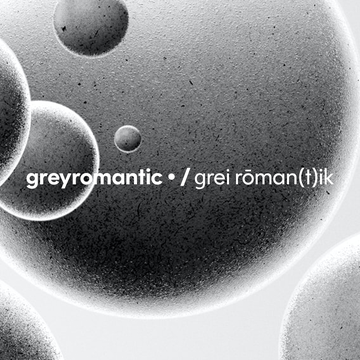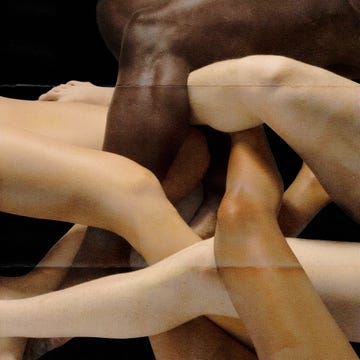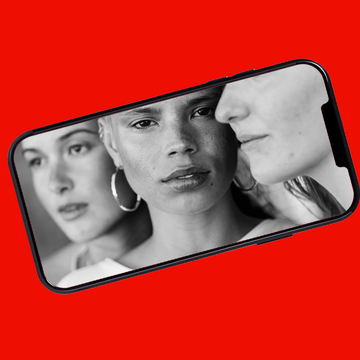A quick geography lesson: Whether you live in a loud and proud liberal city or a small, conservative town, queer people are everywhere. And, hi, even though we still have a long way to go in regards to equality, we are making some progress in terms of queer visibility and acceptance. That said, just because society has broadened its language and begun to embrace the spectrum of sexuality, you might still be wondering what queer actually means.
According to Elise Schuster, MPH, co-founder and executive director of OkaySo, the simplest way to define “queer” is “not straight.” For Schuster, it's an identity and/or orientation that doesn’t align with the heteronormative expectation that everyone’s automatically heterosexual and heteroromantic. "Queerness is about being outside of the normative,” adds psychologist, author, and speaker Liz Powell, PhD. “Queerness is about swimming upstream. It's about your presence in a culture that is heteronormative, that is cisnormative, that is mononormative."
Even though more identity-related words are being added to our dictionary, many folks still opt for the reclaimed term: “queer.” Considering how many people the term describes—as individuals, a community, and even a form of political resistance—queer is a crucial word to understand and celebrate. Whether you identify as queer, want to know if it’s a label you can or should be using, or you’re trying to become a better ally, this exploration will offer everything you need to know about the definition of and history behind the term. Let’s dive in, shall we?
Which orientations fall under the queer umbrella?
Since "queer" is such a broad term, it’s a little confusing to determine who, exactly, it applies to. According to Schuster, “any [orientation or identity] that's not straight” is considered queer. "Beyond that, it's really about if the person with that identity wants to see themselves as being part of a larger queer umbrella," they explain.
To many, queerness encompasses an intersection of identities. Certified sex therapist, Amanda Pasciucco, AASECT. adds that the term indicates an “individual who self-identifies as either lesbian, gay, bisexual, transgender, queer (also sometimes called 'questioning'), intersex and/or asexual, aka the LGBTQIA+ community."
To keep it supes simple, if someone describes themselves as queer, it’s quite often because their sexual orientation and/or gender falls under the LGBTQIA+ umbrella rather than the heterosexual norm. That said, there are so many ways to identify as queer, so if you feel like you’re queer and want to own it, go forth with pride.
Does gender fall under the queer umbrella?
It’s important to remember that sexual orientation and gender are two different things. While orientation is about who you’re attracted to romantically or sexually (bisexual, lesbian, gay, etc.), gender identity is about who you are, whether that’s non-binary, a man, woman, or genderqueer. However, queer can describe orientation, gender, or both at the same time.
“This term has a triple meaning,” says NYU professor of sexuality, scientist, and writer Zhana Vrangalova, PhD. “It is meant to designate non-heterosexual sexual orientation, a non-binary gender identity, and then the third meaning is both, at the same time.”
So while gender and orientation are different, they both fall under the queer umbrella.
So…which orientations aren’t queer?
The definition of queer varies depending on who you ask, so it’s a little tricky to determine who isn’t queer. Since sexuality is a spectrum, it sometimes makes using the term polarizing for bisexual and heteroflexible individuals (even though they totally count). Generally, someone who is heterosexual, heteroromantic, cisgender, and monogamous wouldn’t be considered queer—but there’s an exception.
Pasciucco, for example, utilizes the "+" sign when referring to the queer community in order to indicate pangender or pansexual individuals and those in alternative relationship communities, such as polyamory, kink, or non-monogamy. “As a person who is mostly in other-sex relationships, not all individuals who identify as queer believe that people like me, or people in the plus [of LGBTQIA+], ought to be included in the community,” Pasciucco explains.
There has been some controversy regarding whether it’s PC for straight polyamorous people to call themselves queer. While many in these communities argue that they certainly live outside of the #tradlife norm and should therefore get to call themselves queer, critics argue that for a straight poly person to use the word unfairly piggybacks on decades of LGBTQIA+ activism to gain fundamental rights and celebrate their identities.
And the truth is, some people within polyamorous or kink communities do identify as queer even if they enjoy solely heterosexual relationships. “Just because it’s one penis and one vagina, that doesn’t mean there’s not some queer aspect of you,” queer sex therapist Kelly Wise, PhD explains.
For some, the broadness of the term queer can be challenging, as it doesn’t offer the same precise picture that other identities, such as lesbian, paint. “I like that broad definition and the vagueness of it and the inclusivity of it,” Vrangalova says. “I personally love it as an umbrella for all of the diversity.”
That’s why it’s always best to use the labels someone chooses for themselves, even if they’re not the label you yourself would've used in their situation. When in doubt, just ask how someone identifies, and don’t forget to ask their pronouns while you’re at it.
Is the word “queer” an insult?
The celebration and use of the word "queer" is one of reclamation, since not too long ago, it was used as a slur. “Back in the day, definitely when I was growing up, the word ‘queer’ was a derogatory term,” Wise says. Schuster adds that it was used to say someone was "wrong" if they were gay or different.
It wasn’t until the late ‘80s that the LGBTQIA+ community adopted the term as a form of pride. “I like to think that my queer identity is me saying, You thought you were insulting me, but this is actually something I love about myself,” Schuster says.
That’s partly why, for many folx, queer is also a political identity. “My queerness is about ways that I am challenging the structures of our society,” Powell explains. “And so for me, that is really where queerness lives, in the ways that you are aligning and going with structures in society or fighting it." they say.
An important note: While the word queer is generally celebrated, some LGBTQIA+ folks still prefer to avoid it due to its discriminatory history. Schuster notes that the term hasn’t completely lost its negative potential.
“It's safest for folks who are in the LGBTQIA+ community to use the word, especially when referring to an individual,” they explain. If you’re referring to the queer community (but you’re not a part of it), Schuster suggests just using “LGBTQIA+” to avoid coming off unintentionally derogatory. And if you’re ever unsure what label someone uses or the term they prefer, politely ask them! “Like any term, it is entirely up to an individual how they want to identify and use this language,” Schuster says.
Is queer a sexual identity, a gender identity, or a community?
Queerness is more nuanced than a sexual identity or gender identity, says Pasciucco, who adds that it’s a fluid movement “beyond the binary of cisgender and heteronormativity.” As Nicole Scrivano, LMFT, one of Pasciucco’s colleagues, explained in a blog post:
“As queer women, we come in a variety of forms, identities, and belief systems. Some of these identities are within sexual identities of bisexual, lesbian, gay, pansexual, etc. Some of these identities are within gender: transgender, cisgender, non-binary, femme, gender flexible, etc. Relational identities such as monogamous, polyamorous, swinging, open, etc. Queer women are on a spectrum of gender and sexual fluidity.”
Some folks who fall anywhere in the middle of the sexual orientation spectrum will describe themselves as queer rather than bisexual or pansexual. Others will use both and introduce themselves as “bisexual and queer,” for instance. And, as noted, the term “queer” is also used by those whose gender does not fall on the binary.
Other LGBTQIA+ folks may identify as queer for the simple reason that it’s easier to say one word when describing themselves.
So, not only is “queer” used to describe sexual, romantic, and gender identities, but as previously mentioned, it can also be used to describe the LGBTQIA+ community. Wise says that in using “queer” as a community term, it creates a sense of acceptance. “There’s an aspect to it that doesn’t allow for isolation.”
Ultimately, the definition of queer might be different depending on who you ask, but all the experts agree it’s a powerful word that celebrates accepting yourself and others for exactly who they are.
How do I know if I’m queer?
Considering that “queer” can refer to sexual orientation, gender identity, community, politics, and, perhaps controversially, even relationship formats, it may seem like the word is up for grabs for everyone. Generally speaking, if you’re straight, cis, and monogamous, it’s probably best to leave the term for those whose identity falls outside such norms.
However, if your identity isn’t straight, cis, and monogamous, and the word queer just feels right, go ahead and use it to describe yourself and meet other queer folks. Not only will you foster a community and build a chosen family that can make the troubles and trauma that come with being queer easier, but you can continue to take back the narrative from centuries of oppression. So, cheers, allies and queers, and continue to wave your pride flag as flamboyantly as you want.
How do I find queer community?
Finding your queer community might seem daunting, but there are many avenues to explore. Start by engaging with online platforms and social media groups, using search terms like #Queer and #QueerCommunity on Instagram and TikTok.
Local LGBTQIA+ organizations and community centers also provide a plethora of resources, from support groups to social events. Attending local events, such as Pride parades, workshops, or LGBTQIA+ art exhibitions, can also be a fantastic way to meet people and foster connections within the community. Virtual communities can be a lifeline for those in smaller towns or more conservative areas, offering support and a sense of belonging without geographical constraints.
Lastly, consider reaching out to local queer bars, cafes, bookstores, and volunteer organizations. These places often serve as informal community hubs and can provide a relaxed environment to meet new people and exchange ideas. Remember, every interaction doesn’t need to lead to a deep connection, and it's essential to respect that not every queer person will openly claim their community. Even today, it’s not safe for every LGBTQIA+ person to be out, and part of being both a good ally and/or member of the queer community is letting others decide how and when they come out. If you are in a position to do so, use your privilege to help fight queerphobia to the best of your abilities.
By understanding the diverse and dynamic nature of queerness, you can more confidently explore and engage with communities that affirm and celebrate your identity. Embrace the journey, knowing that each step you take is a move towards finding a space where you can truly be yourself.
Rachel Varina is a full-time freelance writer covering everything from the best vibrators (the Lelo Sona) to the best TV shows (The Vampire Diaries). She has over 10 years of editorial experience with bylines at Women's Health, Elite Daily, Betches, and more. She lives in Tampa, Florida, but did not feed her husband to tigers. When she's not testing out new sex toys (100+ and counting so far!), she's likely chilling with her dogs or eating buffalo chicken dip. Ideally at the same time. Follow her on Instagram and Twitter.
